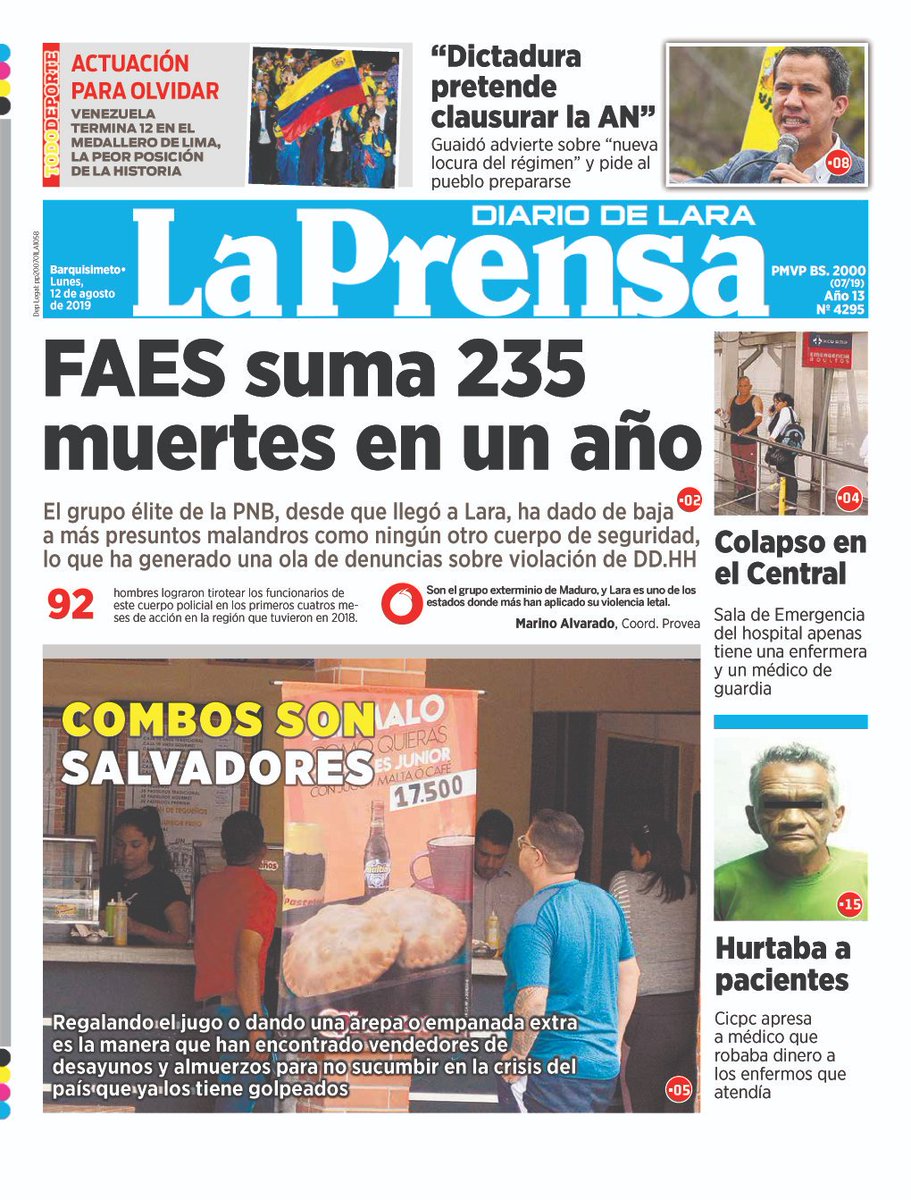

The participants were interrogated for a complete clinical history and anthropometric measurements. The sample consists of 2108 individuals from both genders and randomly selected: 1119 (53.09%) women and 989 (46.91%) men. Materials and Methods A cross-sectional study was undertaken using the data set from the Maracaibo City Metabolic Syndrome Prevalence Study. Since the epidemiological behaviour of this disease is not well established in our country, the purpose of this study was to determinate its prevalence in the Maracaibo City, Zulia State- Venezuela. Introduction Obesity is a worldwide public health issue. Toledo, Alexandra Añez, Roberto Fonseca, Eneida Marcano, Rafael ParÃs Cano, ClÃmaco Miranda, José López
#Diario contraste zulia registration#
It is recommended to continue with the prospective registration of cases, with an extended follow up monitoring period and to facilitate the incorporation of other hospitals in the Zulia State and Venezuela.Įpidemiologic Behavior of Obesity in the Maracaibo City Metabolic Syndrome Prevalence Studyīermúdez, Valmore Pacheco, Maikol Rojas, Joselyn Córdova, Evelyn Velázquez, Rossibel Carrillo, Daniela Parra, MarÃa G. In conclusion, the frequency of DILI cases controlled by the Department of Gastroenterology of the Hospital Universitario of Maracaibo was low, being ibuprofen, acetaminophen, isoniazid and products Herbalife the products most commonly involved. The consumption of Herbalife botanical products is associated with probable causality and fatality (n = 1 7.7%). The highest percentage of DILI corresponded to mild cases that recovered after the discontinuation of the agent involved (n = 9 69.3%). Amoxicillin/clavulanate, isoniazid, isotretinoin, methotrexate and Herbalife nutritional products were implicated as highly-probable and probable agents. The CIOMS/RUCAMS allowed the identification of possible (n = 7 53.9%), probable (n = 4 30.8%) and highly-probable cases (n = 2 15.4%) of DILI. Acetaminophen and ibuprofen showed a mixed pattern of liver injury (n = 3 23.1%) and isoniazid presented a hepatocellular pattern (n = 2 15.4%). Ibuprofen (n = 3 23.1%), acetaminophen (n = 3 23.1), isoniazid (n = 2 15.4%) and Herbalife products (n = 2 15.4%) were the main drugs involved with DILI. Thirteen patients with a presumptive diagnosis of DILI attended by the Department of Gastroenterology, Hospital Universitario, Zulia state, Venezuela, from December-2012 to December-2013 were studied. The aim of this prospective, descriptive, cross-sectional study was to identify and characterize cases of DILI in a hospital of Zulia state, Venezuela. Mengual-Moreno, Edgardo Lizarzábal-GarcÃa, Maribel Ruiz-Soler, MarÃa Silva-Suarez, Niniveth Andrade-Bellido, Raúl Lucena-González, Maribel Bessone, Fernando Hernández, Nelia Sánchez, Adriana Medina-Cáliz, Inmaculadaĭrug-induced liver injury (DILI) is an important cause of morbidity and mortality worldwide, with varied geographical differences.


 0 kommentar(er)
0 kommentar(er)
